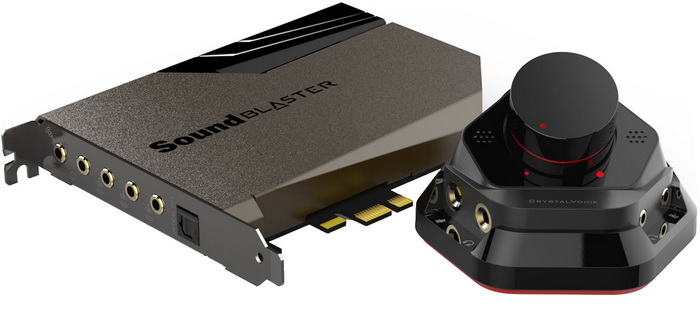INTRODUCTION

Being someone raised in the "midi ERA" i never quite liked the misconception/notion that audio is not nearly as important as video and yes that's primarily because of Creative Labs and all their sound cards i used in the 90's. Of course, i also believe that video comes first (i just don't see the same gap as others) but seeing people spend hundreds of dollars/euros on graphics cards only to end up using the onboard sound card never sat well with me. This is also one of the reasons there are only a handful of manufacturers who actually make sound cards right now and yes Creative once again seems to be leading the market largely thanks to their impressive Sound Blaster AE-9 model (review here). Still because of its high cost the AE-9 is clearly not meant for everyone out there and having already reviewed their very good AE-5 Plus card (review here) for the past 2 weeks I’ve been testing/using the "middle ground" AE-7 model.
Creative is a worldwide leader in digital entertainment products. Famous for its Sound Blaster® sound cards and for driving the multimedia revolution - which established a user base of 400 million - Creative drives digital entertainment with cutting-edge audio solutions that include premium wireless speakers, wireless headphones, powerful audiophile-grade digital amplifiers and next-generation home-theatre systems. Aiming at the new mobile networked generation by bridging the worlds of the computer, smartphones, and tablets, Creative continues to reinvent the Sound Blaster, with its ground-breaking Sound Blaster Roar series and USB-audio class of products such as the Sound Blaster X7.
Just like with both the AE-5 Plus and the AE-9 for the AE-7 Creative has used their Sound Core3D (CA0132-4AN) audio processor which this time they've combined with the SABRE32 reference class 9018 8-channel DAC (digital-to-audio converter) by ESS (supports up to 32-bit stereo playback at 384kHz and DSD64 with an DNR of 127dB and a THD of just 0.0001% at -120dB) and an Xamp discrete headphone bi-amp (each audio channel is individually amplified - supports headsets from 16Ohm and all the way to 600Ohm impedance). Creative has also equipped the AE-7 with an external audio control module (ACM) which features not only both 6.3mm and 3.5mm input/output connectors for microphones and headphones (complete with volume control) but it can also be used as a standalone microphone. Needless to say, that in order to make the most from the Sound Blaster AE-7 Creative uses their command software which is packed with 23 SBX profiles, 35 different equalizer presets, various filters (virtual surround, crystallizer, crystal voice, bass and scout mode) and the very popular Dolby Audio and DTS Connect encoders (S/PDIF out only). So just based on the name (and the specs) of the Sound Blaster AE-7 it's clear that it lands right between the AE-5 Plus and the AE-9 but which one does it come closer to? Time to find out.

 O-Sense
O-Sense







.png)

